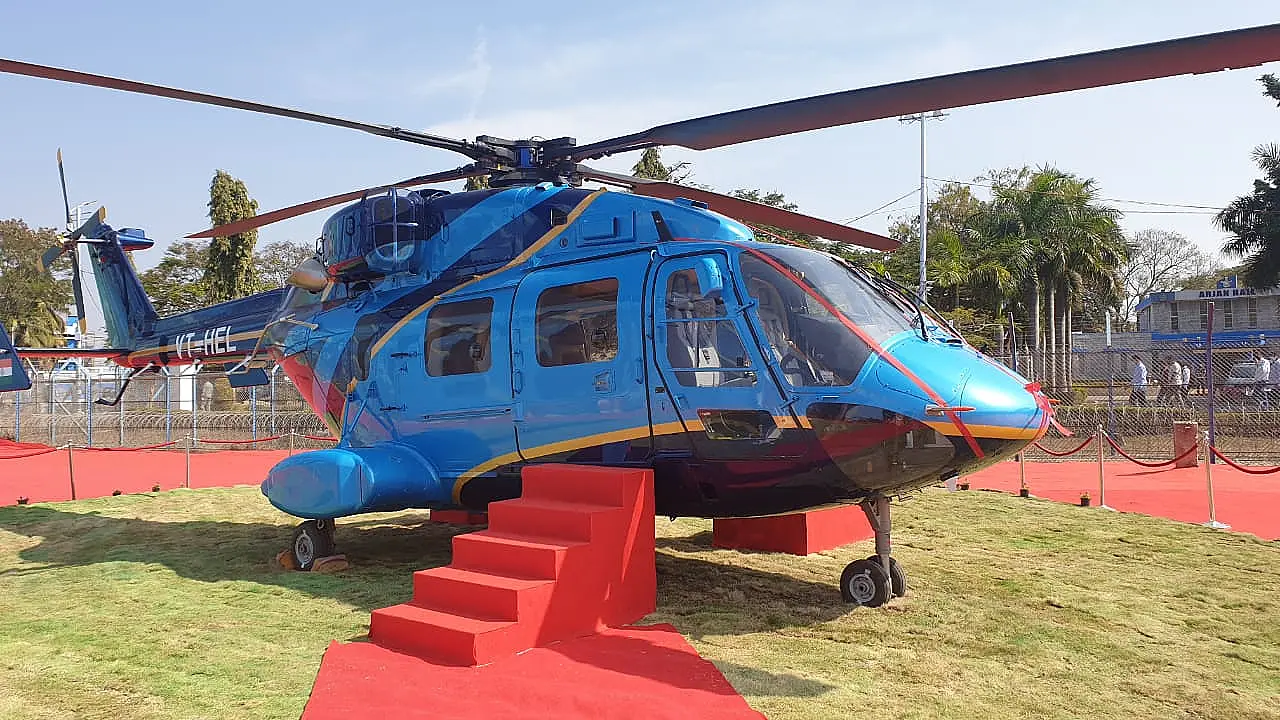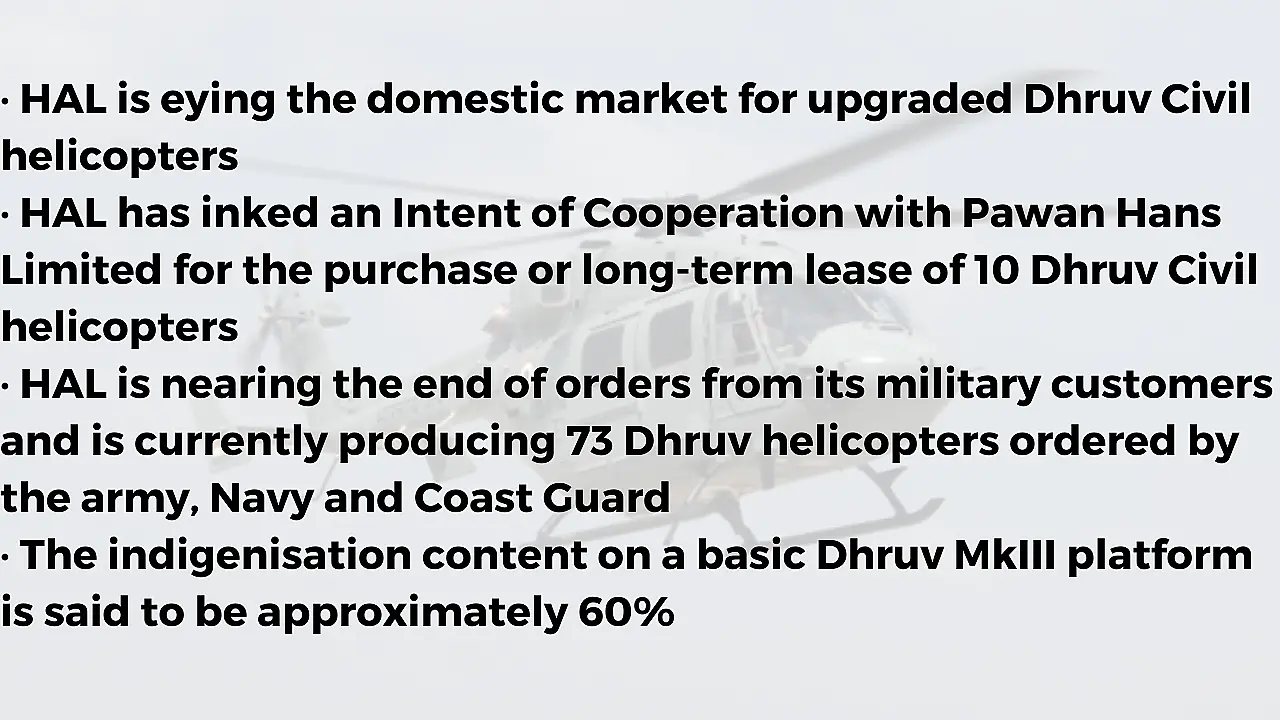
State-owned airframer Hindustan Aeronautics Limited (HAL) is the leading Asian design house for rotorcraft design and development. In addition to producing over 600 helicopters (Cheetah and Chetak) under license from Airbus Helicopters, HAL has gone to design the Advanced Light Helicopter (ALH) Dhruv, Light Combat Helicopter (LCH) and Light Utility Helicopter (LUH).
The Bengaluru-based airframer is also in the initial phases of development of the Indian Multi-Role Helicopter (IMRH), which will have a project cost estimated at INR 10,000 crore. Compared to the Dhruv helicopter, which is in the 5.5-tonne class, the IMRH will be in the 10-12 tonne category. Known primarily as a producer of military fighter jets and helicopters, HAL is now eyeing the domestic market with greater interest in the civilian variant of the Dhruv helicopter.
New Entrant
India’s varied geography and climatic conditions make it ideal for helicopter operations, but widespread adoption in the civilian domain has been limited and remained a captive market for foreign OEMs such as Airbus Helicopters, Bell, Sikorsky, etc. While HAL was largely occupied with military orders for its helicopter in previous years, it is now exploring what it feels is a significant market for its upgraded Dhruv Civil variant.
S Anbuvelan, CEO, Helicopter Complex, HAL, says he is confident that taking all current and future orders into account, including those for the civil variant, production of Dhruv helicopters will touch the 500 mark. HAL rolled out the 300th Dhruv helicopter in September 2020.
In March, HAL inked an Intent of Cooperation (IOC) with state-owned helicopter operator Pawan Hans Limited (PHL) to purchase or long-term lease for 20 helicopters. This included 10 Dhruv Civil helicopters and 10 LUHs. To obtain Directorate General of Civil Aviation (DGCA) certification for the Dhruv Civil, HAL must complete 50 flight hours of testing. HAL also offers 24/7 after-sales support for the Dhruv civil to ensure enhanced availability for civilian operators.
Steady Orderbook
HAL is nearing the end of orders from its military customers and is currently producing 73 Dhruv helicopters ordered by the Indian Army (41), Indian Navy (16) and Indian Coast Guard (16). It is expecting to complete these deliveries this year. “We definitely anticipate more orders for Dhruv and expect these orders from Army, IAF, Coast Guard and Navy,” Anbuvelan said. In addition, he is expecting the Coast Guard to order nine additional helicopters along with repeat orders from the Navy as well.

The army could also require 23 additional helicopters, while the air force is expected to order another 20 Dhruv helicopters. “However, since the military versions of the ALH orders are almost getting exhausted, we are looking at options of venturing into the civil market.” However, the additional orders from the Indian military will allow HAL to keep the Dhruv production line open for many more years, allowing it to also meet any civilian demand.
Upgraded Offering
The Dhruv Civil is based on the Dhruv MkIII variant produced for military customers and is modified to meet civilian requirements. In the previous version, Dhruv MkI was also certified for the civil market but received a lukewarm response. The indigenisation content on the basic Dhruv MkIII platform is approximately 60%.
HAL has already completed one prototype, which is being used for test and configuration purposes. Compared to the previous Dhruv Civil based on the first generation Dhruv MkI helicopter, the latest civil variant will have a full glass cockpit. The Dhruv Civil will be capable of night operations as well and will be able to perform a variety of roles ranging from VIP/VVIP travel to off-shore/on-shore operations, search & rescue, casualty evacuation, commuter role, law enforcement, disaster relief, internal cargo and underslung operations.
In its VIP configuration, the Dhruv Civil can seat nine passengers, while it can seat 14 passengers in the utility configuration. The Dhruv helicopter extensively uses composites and features several advanced technologies such as Active Vibration Control System (AVCS), 4 Axis Digital Flight Control System, Integrated Dynamic Rotor System, Hingeless main rotor, Anti-Resonance Isolation System (ARIS), bearingless tail rotor, etc. The helicopter can attain a maximum speed of 240 kmph (at sea level) and has an endurance of four hours. Range with 20 minutes of the internal reserve has been quoted by HAL as 630 km.
Unlike the latest military variants of the Dhruv helicopter, powered by Shakti engines, the Dhruv Civil retains the Safran Helicopter Engines TM-333-B2, which deliver 825kW each. The helicopter’s unladen weight is 3.4 tonne, while the Max Take Off Weight is 5.5 tonne.
The prototype Dhruv helicopter had made its maiden flight in August 1992. Certification of the military utility variant was completed in 2002, and that of the civil variant (Mk1) was completed in 2004. Over the years, HAL has developed the Dhruv helicopter from its MkI to armed MkIV variants called ‘Rudra’ and the Dhruv Civil. Dhruv helicopters in service with the armed and paramilitary forces and civilian customers have flown over 2,80,000 hours.